This Exposed episode is brought to you by Team R.A.B.B.I. My first thought when opening the envelope from them was “Oh wow, thanks!” My second thought was “I wonder what these look like on the inside.” It must’ve taken a lot of restraint but I managed to not open them until at least an hour later. They did not disappoint. These things look great on the inside!
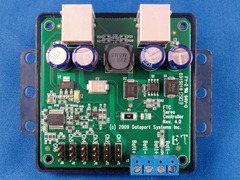 |
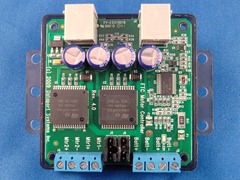 |
|
The servo controller |
The DC motor controller |
As you can see from the pictures, these have quite a number of components on them. The servo controller is not as exciting looking as the DC motor controller, though. You can see two really beefy motor controlling chips on the right one and a smaller microcontroller just to the right of them. I checked on the bottom of the PCBs but there are nothing but a couple of traces there. The servo controller has the 6 servo connectors to the bottom left. The motor controller has the motor terminals on the left, the encoder connectors and then the power terminals.
So now that I’ve seen them on the inside, I am going to have to see them actually work! More on that at a later date.
 Bot Bench I'd Rather Be Building Robots
Bot Bench I'd Rather Be Building Robots

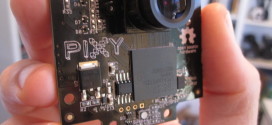
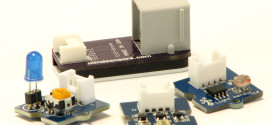
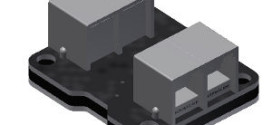
[…] really write about it anyway. However, now that it’s out there in the wild and I was opening up other sensors and had the light box out, I thought, “Why the heck […]
Is there a NXC driver for the HiTechnic motor and servo controllers?
There seems to be one made by Matt, you can take a look here: http://mattallen37.wordpress.com/2011/05/20/tetrix-and-nxc-drivers/
I was wondering, were you able to interface these controllers with something like an Arduino, Raspberry PI, etc? If so, is it easy as writing a two bytes, one for a memory address location and the second a target motor position as listed in this doc (http://www.patronumbots.com/uploads/1/3/1/6/13161577/hitechnic_servo_controller_-_brief_v1.2.pdf)? I have a couple of these and would love to try these out.
Hi Rich,
I fixed the link in your message to the URL it was ultimately pointing to. I have never made them work with an Arduino or Pi but I see no reason why it wouldn’t work. I2C is a simple protocol. Just make sure you don’t exceed the ~10KHz clock speed or it may not work well.
Thanks! I’ll try them out and let you know if I get it working!